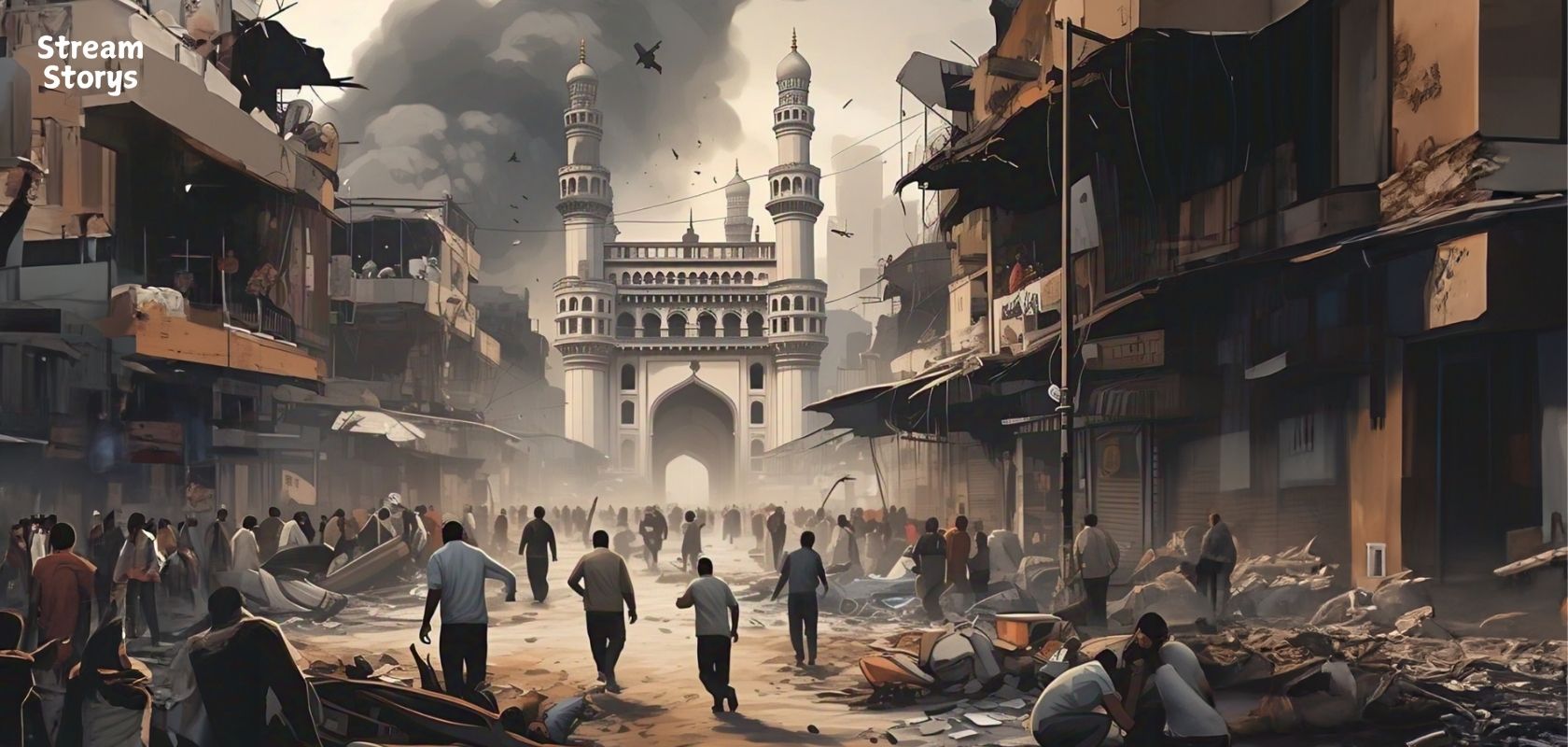
Hyderabad Attack
In August 2007, the bustling city of Hyderabad was struck by a tragic terrorist attack that left its residents in shock and grief. The attack occurred in the heart of the city, in one of its most popular and crowded market areas. The city, known for its rich history, vibrant culture, and diverse population, had never seen an attack of this magnitude before. The blasts, which were set off almost simultaneously, tore through the busy lanes, causing chaos, panic, and confusion among the people.
The markets, known for their shops selling everything from clothes to food, were filled with people out shopping for the upcoming festival. It was a typical day, with families, students, and workers rushing through the crowded streets. The bomb blasts, however, shattered the peaceful atmosphere in an instant. The first explosion went off near the famous Lumbini Park, where many people had gathered for an evening outing. The second blast followed soon after, at the crowded Mecca Masjid area, another popular location for both locals and tourists.
The blasts caused an enormous amount of damage, not just physically, but emotionally as well. Buildings were damaged, vehicles were set ablaze, and the air was filled with dust, smoke, and screams. People ran in all directions, desperately trying to escape the destruction. It was clear that this was no accident—this was a planned attack, aimed at creating maximum chaos and fear.
As the dust settled and the rescue teams arrived, the full extent of the tragedy became apparent. Over 40 people had been killed, and more than 100 were injured, many critically. The injured were rushed to nearby hospitals, and the medical staff worked tirelessly to treat them. But the city was left in a state of disbelief. People struggled to understand how something so horrifying could happen in their own backyard.
The investigation into the attacks began immediately. The police, along with national intelligence agencies, launched a full-scale inquiry to find those responsible for the blasts. It was soon revealed that the attack was the work of a terrorist group with links to organizations outside India. They had planned the attack to destabilize the city and send a message of fear.
In the days that followed, the people of Hyderabad came together to mourn the victims and show solidarity with those affected. Candlelight vigils were held, and people from all walks of life joined in to condemn the violence. Despite the fear and trauma, the spirit of the city remained strong. The attack, though tragic, did not break the resilience of the people.
As the investigation continued, the police were able to gather crucial evidence. They identified several suspects and made arrests. Some of the terrorists involved in the planning and execution of the blasts were captured, while others managed to escape. It was a long and difficult process, but eventually, the perpetrators were brought to justice.
The 2007 Hyderabad bombings served as a grim reminder of the ongoing threat of terrorism. It highlighted the vulnerability of public spaces and the need for increased security measures in crowded areas. But it also demonstrated the strength and unity of the people of Hyderabad. Despite the loss and suffering, the city continued to move forward, determined not to let fear dictate their lives.
The memories of the tragedy lingered for a long time, but over the years, Hyderabad recovered, and its people became more determined to ensure that such an attack would never happen again. The city’s resilience in the face of terror became a symbol of hope for the entire country, proving that even in the darkest times, the human spirit can endure.
Credits
Posters : Photoshop, Meta AI, Canva. Designed by Jessi Hemanth